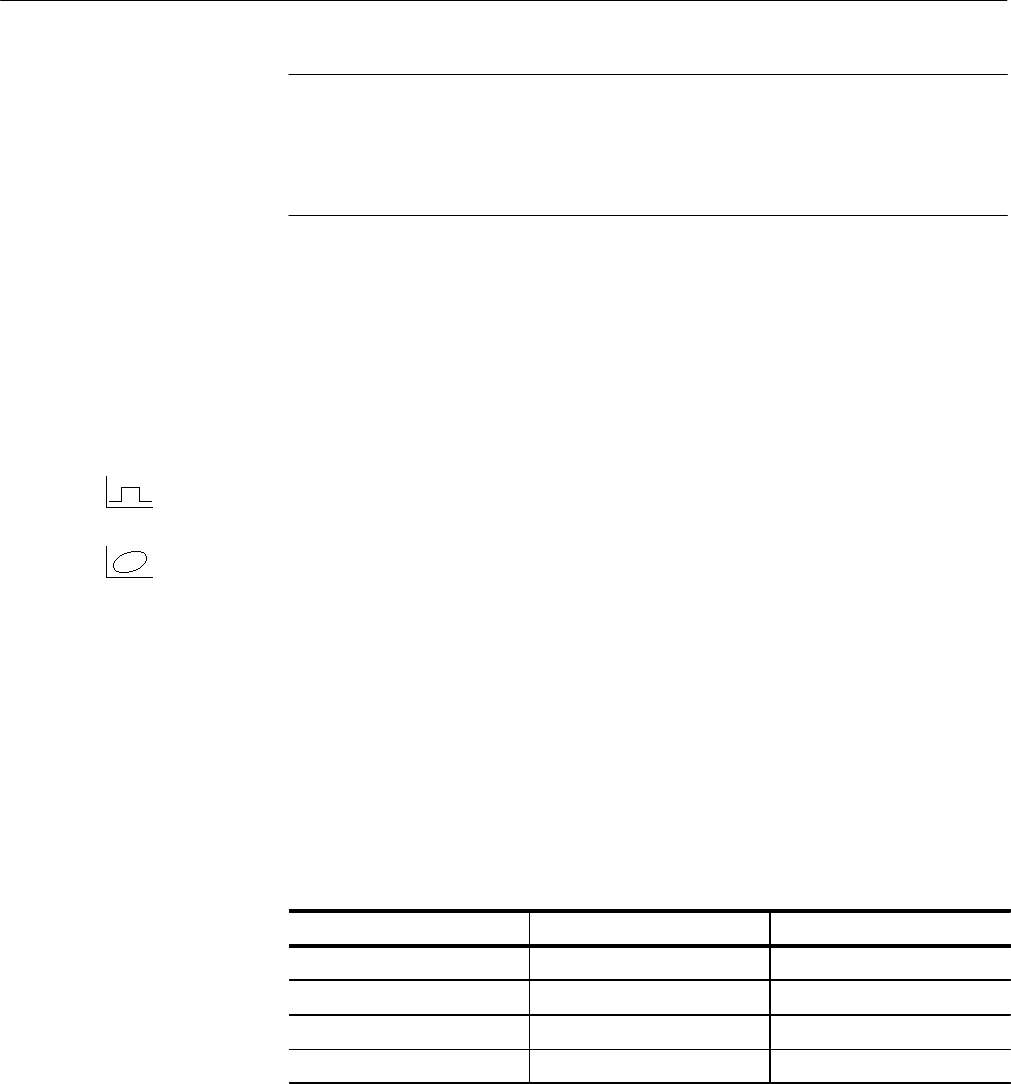
Acquiring and Displaying Waveforms
TDS 500C, TDS 600B, & TDS 700C User Manual
3–43
NOTE. Selecting either NTSC or PAL graticules automatically changes the
vertical scale, position settings, coupling, and sets to zero any vertical offset of
any channel displayed. These settings are not restored after switching to other
graticule types. Therefore, you might want to recall the factory setup or other
stored setup after selecting a different graticule.
The oscilloscope displays waveforms in either of two formats: YT and XY. To
set the display axis format:
TDS 600B: Press DISPLAY ➞ Format (main) ➞ XY or YT (side).
TDS 500C and TDS 700C models: Press DISPLAY ➞ Mode (main) ➞ Normal
(pop-up) ➞ Format/RO (main) ➞ XY or YT (side).
YT is the conventional oscilloscope display format. It shows a signal voltage (the
vertical axis) as it varies over time (the horizontal axis).
XY format compares the voltage levels of two waveform records point by point.
That is, the oscilloscope displays a graph of the voltage of one waveform record
against the voltage of another waveform record. This mode is particularly useful
for studying phase relationships.
When you choose the XY format, any channel or reference displayed is assigned
to the axis indicated in Table 3–5 and displayed as part of an XY pair. If only one
source in an XY pair is displayed, the oscilloscope automatically turns on the
other source to complete the XY pair when you select XY. Moreover, once XY is
on, selecting either source in a pair turns the pair on; pressing WAVEFORM OFF
for either source in the pair removes both sources from the display.
Table 3–5: XY Format pairs
XY Pair X-Axis source Y-Axis source
Ch 1 and Ch 2 Ch 1 Ch 2
Ch 3 and Ch 4 (Ax1 and Ax2) Ch 3 (Ax1) Ch 4 (Ax2)
Ref 1 and Ref 2 Ref 1 Ref 2
Ref 3 and Ref 4 Ref 3 Ref 4
Select the Format
